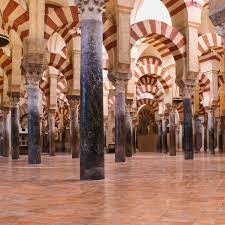LEGACY OF MUSLIM RULE IN INDIA
LEGACY OF MUSLIM RULE IN INDIA
1) PRICE CONTROL MARKET SYSTEM- The economic regulation issued by the sultan for controlling markets were as under a) rate fixed of food grains, horses, cattles , slaves. b) Without state permission there was no any criteria to change the fixed price. c) Four separate markets were established for various commodities. 1) central grain market 2)market for manufacturing goods. 3) market for general merchandise. 4) market for horses , cattles, slaves. each market was put under the ‘shahna’ or the controller of the market. Sultan received daily report of the market from 3 independent sources such as shahna, barids(intelligence officer)and munshi secret spies. for cheating and any kind of corruption punishment was there . state could subsidize the cost but only could sale by permit officer appointed by the state called parvana navis.
2) ARCHITECTURE- The Turks use archs and dome in their buildings on a wide scale while the dome provided a pleasant skyline. The union architectural device called corbelling or trabeate in building the method of putting one stone over the other projecting invertly till the gap is narrowed and covered. The sultanate buildings were limited to a) Calligraphy b)geometry c) fabrication. Calligraphy was most decorative part during the period. The most dominated form in the sultanate buildings is called arabesque. Balconies were the most important part of the building because of architectural device employed in their construction. A striking feature of tughluq building is sloping walls called battas which gives an effect of strength and solidarity to the building. The system of construction in which arches and dome are used in a scientific manner is called arcuate system of construction.
3) ZABT SYSTEM- It is primarily based on 3 important features. 1)measurement of land 2)collection of land revenue cash and 3)lastly accessions of state demand separately for rabi and kharif regions.
4) MANSABDARI SYSTEM- This system played a significant role in the stability of mughal empire .it was based on dual rank system- zat and sanwar. The zat signifies the personal pay and status of noble whereas the other rank -sawar integrated total number of contingent or horses and horseman. He was supposed to maintain of a noble or masabdar that is zat rank (5000- 6000).
Reference: AMU history department Notes


Comments
Post a Comment